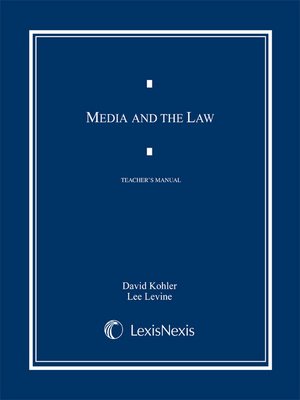
Sign up to save your library
With an OverDrive account, you can save your favorite libraries for at-a-glance information about availability. Find out more about OverDrive accounts.
Find this title in Libby, the library reading app by OverDrive.



Search for a digital library with this title
Title found at these libraries:
| Loading... |
TEACHER'S MANUAL for Media and the Law
Although this volume surveys the entirety of the media law landscape, the authors focus in particular on real world problems -- in other words, the issues that are most likely to confront media lawyers and journalists in their everyday practices. The text is divided into five basic parts.
Part I: The Media and the First Amendment: An Overview
Part II: Issues Relating to the Dissemination of Information
Part III: Issues Relating to the Acquisition of Information
Part IV: Business and Regulatory Issues
Part V: International Issues
The first part addresses fundamental definitional and constitutional issues. It begins with an examination of how to define the media in the twenty first century, and why definitional constructs matter. It then proceeds to examine the overarching First Amendment principles that set this field of law apart from most others. As former Supreme Court Justice Potter Stewart once observed, the press is the only private entity that is explicitly protected by a provision of the American Constitution.
The next two parts of the text constitute its substantive core, examining issues that arise, first, from the dissemination of information and, second, from how information is collected in the first place. The chapters cover media civil and criminal liability as well as certain affirmative rights to access information.
Finally, Parts IV and V address somewhat more esoteric, although important problems. Part IV examines selected legal issues relating to the media business and the special problems that arise from the electronic dissemination of information. Part V considers selected international issues, a subject that looms ever larger as the result of new technologies that facilitate the seamless, global distribution of content.
Each chapter in Media and the Law begins with a short overview that attempts to put the subject addressed in context. The remaining bulk of the chapters consist principally of edited versions of the relevant cases and legal scholarship. It is important for students to read the cases, rather than short summaries of them. Although the latter can certainly help reduce the bulk of a volume, such summaries inevitably sacrifice the nuance and context that often makes an important difference in the resolution of the questions presented.






